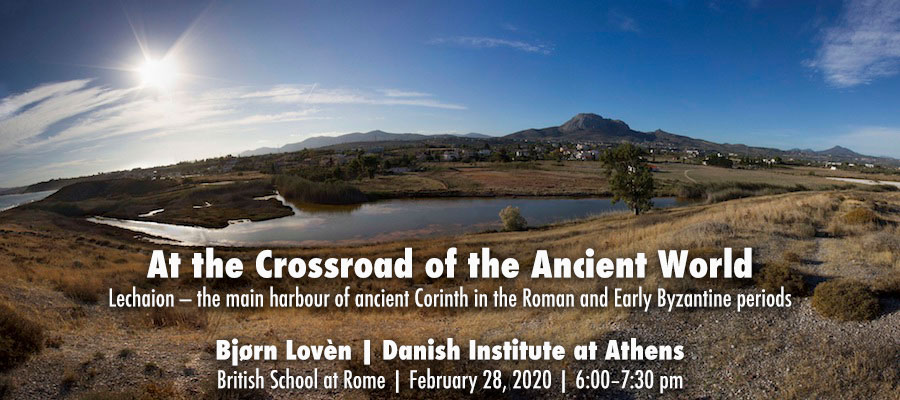At the crossroad of the ancient world: Lechaion — the main harbour of ancient Corinth in the Roman and Early Byzantine periods, lecture by Bjørn Lovèn (Danish Institute at Athens), British School at Rome, February 28, 2020, 6:00–7:30 pm
Ancient Corinth had a pair of ports that connected the city to Mediterranean trade networks, one of the Gulf of Corinth and one on the Aegean Sea. Recent excavations by the Lechaion Harbour Project have revealed the Roman engineering that created the port in the Gulf of Corinth. The team has found a large harbour complex with an outer basin of 40,000 square meters and an inner basin of 24,500 square meters. The basins are delineated by moles 45 metres in length and 18 metres wide constructed of five-ton stone blocks. The project is revealing monumental buildings, a lighthouse, and a monumental structure on an island in the middle of the inner basin. The project is a cooperation between the Danish Institute at Athens, University of Copenhagen, and the Greek Ephorate of Underwater Antiquities. The lecture At the crossroad of the ancient world: Lechaion — the main harbour of ancient Corinth in the Roman and Early Byzantine periods by the project director, Bjørn Lovèn (Danish Institute at Athens), will present the project’s findings and the context of the harbour.
Bjørn Lovèn is a Research Associate with the Saxo Institute at the University of Copenhagen. His areas of specialty are the archaeology of ancient harbors and submerged sites: he is director of the Zea Harbour Project at ancient Piraeus in Greece, director of the Lechaion Harbour Project in Corinth, Greece, and has done extensive fieldwork at underwater and harbor sites around the Mediterranean.
